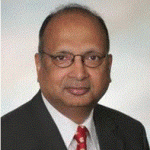- Home
- Message from Chairs
- Conference Program
- Workshops' Schedule
- Organizing Committee
- Technical Program Committee
- Keynote Speakers
- Invited Speakers
- Panel Discussions
- Demos & Exhibits
- Poster Session
- PhD Forum
- Mobile India 2014
- E6 Workshop
- NetHealth Workshop
- Social Networking Workshop
- Math of Networks Workshop
- Call For Participation
- Paper Submission
- Venue & Accomodation
- Visa
- Visiting Bangalore
- Participant Travel Grants
- Patrons
- Sponsorship Opportunities
- Registration
- Registration Fee Details
Keynote
Speakers
Download Keynote Talk Presentations
SDN and Streamlining the Plumbing
- Nick McKeown
- Arogyaswami Paulraj, Professor Emeritus, Stanford University
- Nick McKeown, Kleiner Perkins, Mayfield and Sequoia Professor, Electrical Engineering & Computer Science, Stanford University
- Soumen Chakrabarti, Associate professor, Indian Institute of Technology, Bombay
Short Bio of Arogyaswami Paulraj
 Professor Emeritus Arogyaswami Paulraj, Stanford University, is a pioneer of MIMO wireless technology that is now incorporated into all new wireless systems. He led a large research group at Stanford University in Smart Antennas from 1993 to 2010.
Professor Emeritus Arogyaswami Paulraj, Stanford University, is a pioneer of MIMO wireless technology that is now incorporated into all new wireless systems. He led a large research group at Stanford University in Smart Antennas from 1993 to 2010.
Professor Paulraj founded Iospan Wireless that establishedMIMO/OFDMA as the core technology for 4G cellular and co-founded Beceem Communications that was a market leader in 4G-WiMAX semiconductors. During his 30 years in India he founded three national level laboratories and led the APSOH sonar project, the world’s top anti-submarine sonar.
Professor Paulraj’s recognitions include the IEEE Alexander Graham Bell Medal and the Padma Bhushan (an award in India). He is a member of several scientific academies including the US National Academy of Engineering and the Royal Swedish Academy of Engineering Sciences. Most recently, he has been awarded the prestigious 2014 Marconi Prize and Fellowship.
Keynote Date : January 7, 2014
Title : A Brief History of Three Ideas in Signal Estimation, Localization and Transmission
This talk outlines the story of my journey in signal estimation, localization and transmission. I begin with a discussion of my doctoral work in estimation of Markov signals using tools from diffusion theory. Though, this work solved a large class of estimation problems, the use of Ito calculus limited it’s impact. Next, I describe the origins of the ESPRIT algorithm originally developed for Directions-of-Arrival / localization problems, but now more common in system identification. My third topic is the invention of MIMO spatial multiplexing for wireless transmission, the early difficulties in getting the idea accepted and its later dramatic growth. The talk ends with some thoughts on innovation in engineering.
Short Bio of Nick McKeown

Nick McKeown (PhD/MS UC Berkeley ’95/’92; B.E Univ. of Leeds, ’86) is the Kleiner Perkins, Mayfield and Sequoia Professor of Electrical Engineering and Computer Science at Stanford University, and Faculty Director of the Open Networking Research Center. From 1986-1989 he worked for Hewlett-Packard Labs in Bristol, England. In 1995, he helped architect Cisco’s GSR 12000 router. In 1997 Nick co-founded Abrizio Inc. (acquired by PMC-Sierra), where he was CTO. He was co-founder and CEO of Nemo (“Network Memory”), which is now part of Cisco. In 2007 he co-founded Nicira (acquired by VMware) with Martin Casado and Scott Shenker. In 2011, he co-founded the Open Networking Foundation (ONF) with Scott Shenker.
Nick is a member of the US National Academy of Engineering (NAE), a Fellow of the Royal Academy of Engineering (UK), Fellow of the IEEE and the ACM. In 2005, he was awarded the British Computer Society Lovelace Medal, in 2009 the IEEE Kobayashi Computer and Communications Award and in 2012 the ACM Sigcomm Lifetime Achievement Award. Nick is the STMicroelectronics Faculty Scholar, the Robert Noyce Faculty Fellow, a Fellow of the Powell Foundation and the Alfred P. Sloan Foundation, and recipient of a CAREER award from the National Science Foundation. In 2000, he received the IEEE Rice Award for the best paper in communications theory. Nick’s current research interests include software defined networks (SDN), how to enable more rapid improvements to the Internet infrastructure, and tools and platforms for networking research and teaching.
Keynote Date : January 8, 2014
Title : Software defined networks and streamlining the plumbing
One consequence of software defined networking (SDN) is that it clearly defines the role of the switches. Essentially, a switch only needs to do four things: (1) parse each packet header to find the fields it is interested in, then (2) match on those fields, yielding (3) rules to modify the packet, and finally (4) forward each packet to its next hop. Put another way, we can abstract packet forwarding as a set of “parse-match-action” processing steps, whether we are describing a simple Ethernet switch that plumbs servers together in a data center, or a router that aggregates enormous amounts of traffic together in a WAN.
The “parse-match-action” forwarding model has two nice consequences that I’ll describe in the talk. First, it tells us why programmable NPUs (network processors) were the wrong model for building packet switches. Instead of a sea of hard-to-program Turing-complete processors, we just need a very fast, simple, RISC-like hardware pipeline that implements the “parse-match-action” model. I will describe such a design. Second, now we have an abstract model of forwarding, we can verify that the forwarding plane is doing what we originally intended. This allows us to bring in a vast swathe of formal verification and debugging techniques from other fields. I believe that in 20 years, we will look back and recognize this as the time network plumbing got dramatically simpler and less error prone.
Short Bio of Soumen Chakrabarti
 Soumen Chakrabarti received his B.Tech in Computer Science from the Indian Institute of Technology, Kharagpur, in 1991 and his M.S. and Ph.D. in Computer Science from the University of California, Berkeley in 1992 and 1996. At Berkeley he worked on compilers and runtime systems for running scalable parallel scientific software on message passing multiprocessors.
Soumen Chakrabarti received his B.Tech in Computer Science from the Indian Institute of Technology, Kharagpur, in 1991 and his M.S. and Ph.D. in Computer Science from the University of California, Berkeley in 1992 and 1996. At Berkeley he worked on compilers and runtime systems for running scalable parallel scientific software on message passing multiprocessors.
He was a Research Staff Member at IBM Almaden Research Center from 1996 to 1999, where he worked on the Clever Web search project and led the Focused Crawling project. In 1999 he joined the Department of Computer Science and Engineering at the Indian Institute of Technology, Bombay, where he has been an Associate professor since 2003. In Spring 2004 he was Visiting Associate professor at Carnegie-Mellon University.
He has published in the WWW, SIGIR, SIGKDD, SIGMOD, VLDB, ICDE, SODA, STOC, SPAA and other conferences as well as Scientific American, IEEE Computer, VLDB and other journals. He won the best paper award at WWW 1999. He was coauthor on the best student paper at ECML 2008. His work on keyword search in databases got the 10-year influential paper award at ICDE 2012. He holds eight US patents on Web-related inventions. He is also author of one of the earliest books on Web search and mining.
He has served as technical advisor to search companies and vice-chair or program committee member for WWW, SIGIR, SIGKDD, VLDB, ICDE, SODA and other conferences, and guest editor or editorial board member for DMKD and TKDE journals. He has served as program chair for WSDM 2008 and WWW 2010.
His current research interests include integrating, searching, and mining text and graph data models, exploiting types and relations in search, and dynamic personalization in graph-based retrieval and ranking models.
Keynote Date : January 9, 2014
Title : Interpreting Entity-oriented Queries on the Annotated Web of Objects
Search engines are increasingly supplementing crawls of unstructured text on Web pages with semistructured and structured data. Annotating Web text with references to entities from a suitable catalog allows powerful queries beyond the “ten blue links” search paradigm. The coverage of the catalog is critical here. Wikipedia, with only a few million entities, provides reliable textual mentions of popular or “head” entities that can be used to train entity disambiguators and annotators. Freebase offers much larger coverage of “tail” entities, but with scant mentions.
In the first part of the talk, we will set up a framework for bootstrapping from such small to large catalogs. We propose a joint bipartite graphical inference model where entity mention disambiguation is combined with resolving types of ambiguous mentions. We report on experiments involving 780,000 people in Wikipedia, 2.3 million people in Freebase, 700 million Web pages, and over 20 professional editors. Our recall and precision are considerably better than a recent annotation data set (FACC1) released by Google using the same corpus and catalog.
In the second part we give new models for analyzing and executing queries that seek entitles by specifying a target type, e.g., scientists who played the violin. Different query tokens have different purposes. We show that query interpretation is greatly improved by adopting a holistic model that incorporates corpus statistics and ranks responses jointly. We give new query processing algorithms that account for uncertainty in query interpretation. Experiments involving 500 million Web pages, 200 thousand types from Wikipedia, and 700 entity-seeking queries establish the efficacy of our approach.











